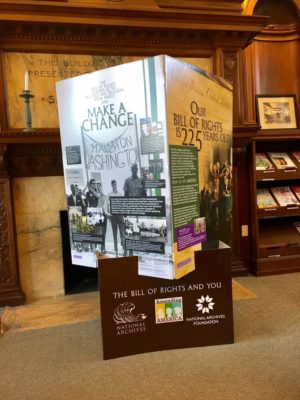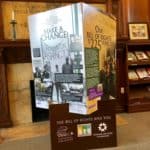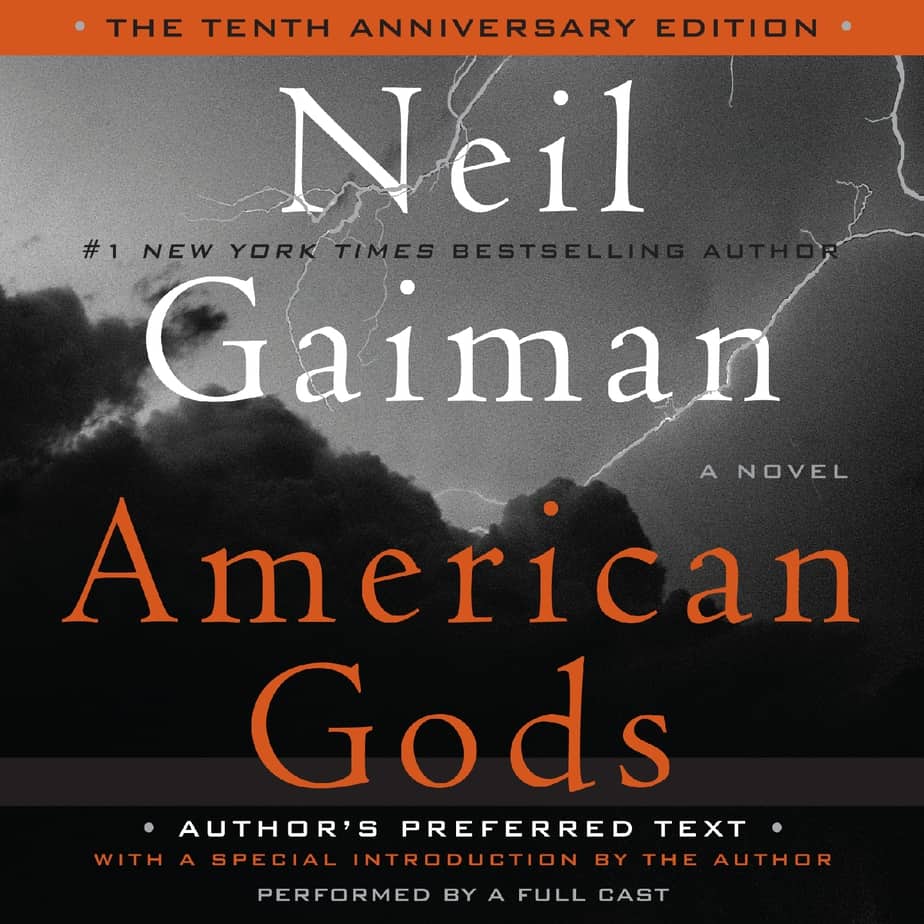Author Archives:Site Admin
The Underground Railroad
The Underground Railroad by Colson Whitehead
Winner of the Pulitzer Prize and the National Book Award, the #1 New York Times bestseller from Colson Whitehead, a magnificent tour de force chronicling a young slave’s adventures as she makes a desperate bid for freedom in the antebellum South
Cora is a slave on a cotton plantation in Georgia. Life is hell for all the slaves, but especially bad for Cora; an outcast even among her fellow Africans, she is coming into womanhood—where even greater pain awaits. When Caesar, a recent arrival from Virginia, tells her about the Underground Railroad, they decide to take a terrifying risk and escape. Matters do not go as planned—Cora kills a young white boy who tries to capture her. Though they manage to find a station and head north, they are being hunted.
In Whitehead’s ingenious conception, the Underground Railroad is no mere metaphor—engineers and conductors operate a secret network of tracks and tunnels beneath the Southern soil. Cora and Caesar’s first stop is South Carolina, in a city that initially seems like a haven. But the city’s placid surface masks an insidious scheme designed for its black denizens. And even worse: Ridgeway, the relentless slave catcher, is close on their heels. Forced to flee again, Cora embarks on a harrowing flight, state by state, seeking true freedom.
Like the protagonist of Gulliver’s Travels, Cora encounters different worlds at each stage of her journey—hers is an odyssey through time as well as space. As Whitehead brilliantly re-creates the unique terrors for black people in the pre–Civil War era, his narrative seamlessly weaves the saga of America from the brutal importation of Africans to the unfulfilled promises of the present day. The Underground Railroad is at once a kinetic adventure tale of one woman’s ferocious will to escape the horrors of bondage and a shattering, powerful meditation on the history we all share.
Review from Amazon.com

27
AprD-Day in a Day
 D-Day in a Day
D-Day in a Day
“You are about to embark upon the Great Crusade, toward which we have striven these many months. The eyes of the world are upon you. The hopes and prayers of liberty-loving people everywhere march with you… We will accept nothing less than full victory!”
Yikes. Talk about pressure.
You may recognize these words, or at least the occasion that prompted them. They were spoken on the eve of June 6, 1944 by Supreme Allied Commander Dwight D. Eisenhower as he sent hundreds of thousands of soldiers across the English Channel to Normandy, France to launch the largest amphibious assault in history. That event, Operation Overlord, culminated in the ultimate liberation of Europe from Nazi Germany. We know of it as D-Day.
I decided to include a detour to Normandy during my upcoming trip to visit my daughter in Paris. I hoped she’d come too. Whether it was a burning desire to experience first-hand the bloodied battlegrounds of history or the fact that the trip was on someone else’s euro, Belle was all in. Laptop in hand, she sprang into action to book us an airbnb, but where? I admit to some particular preferences when it comes to international travel. I’m up for almost any adventure—as long as it has the Rick Steves seal of approval.
My soft spot for Rick is no secret. His travel guides are fun to read, easy to follow, and bursting with helpful tips, maps, walking tours, itineraries, and places to eat, sleep, and be merry. Don’t even get me started on his downloadable audio tours.I beelined to the travel section of the library and grabbed “Rick Steves France 2017.”
Rick raves about the romantic port of Honfleur renowned for its history, picturesque harbor, and “unusual luminosity.” I was sold; Belle wasn’t buying it. Taking her friends’ advice, she proposed the small seaside resort of Etrétat. I caved, but only because Rick too gave it the nod.
Etrétat did not disappoint. Steps from our cozy accommodations I stood on the exact spot where Monet painted numerous seascapes of the dramatic scene directly opposite, a reproduction of which was there on display.
We started our sightseeing in Arromanches, part of Gold Beach in the British landing zone, with the 360 degree surround-sound film, “Normandy’s 100 Days.” Head swiveling, I tried to take in all the archival footage and photographs of German and Allied soldiers in action and the joy on the faces of the townspeople welcoming their liberators. I was blinking back tears by the end.
Our next stop, at Rick’s suggestion, was the Germany gun battery at Longues-sur-Mer. We wandered around the massive pillboxes, their iron hooks for securing camouflage netting still intact. In the observation bunker by the water I tried not to eavesdrop too conspicuously on a private tour. One tidbit I couldn’t help overhear: an Allied bomb had fortuitously struck the underground telephone wire, cutting off communication between the look-out and the gunners who were then forced to rely on their own inferior aim. I love hearing stuff like that. Next time I might splurge and hire my own guide; Rick recommends several.
By late afternoon we reached Omaha Beach, the site of the first American D-Day landing so powerfully portrayed in Spielberg’s “Saving Private Ryan.” Remember the opening scene, with Tom Hanks and his terrified men scrambling to shore while trying to avoid being slaughtered?
At the American Cemetery in Normandy, a pilgrimage site for both veterans and history buffs, we walked on manicured Kentucky bluegrass among endless rows of white marble gravestones. From the bluff overlooking the now bleak and deserted beach, we followed the haunting notes of a trumpet back to the cemetery. Everyone stood still as the two American flags were lowered at sunset, listening in silence to the final strains of taps.
Traipsing around bunkers and beaches all day takes its toll, so we went in search of fortification. I consulted Rick, who steered us to a 10th century farm offering cider and Calvados tastings. Or he tried to, anyway; it was closed until spring.
There are dozens of D-Day museums, monuments, and memorials open to the public. We saw only a handful. Because dusk was approaching we missed out on another moving site—the Pointe du Hoc Monument, where specially trained U.S. Army Rangers scaled an impossibly sheer cliff face to take out the Germany gun battery. Next time.
Chilled and emotionally spent, we headed home. We made it to Honfleur after all, ending the day at one of the harborside bistros under the warmth of a heat lamp.
If traveling 3,000 miles across the Atlantic isn’t convenient, you can experience this slice of history vicariously at the library. For historical fiction fans, “The Nightingale” by Kristin Hannah and Anthony Doerr’s “All the Light We Cannot See” are two compelling accounts of the French Resistance and life under German occupation. Another page-turner just published is “The Baker’s Secret” by Stephen Kiernan, a wonderful story of the resilience of the human spirit set in a Normandy village on the eve of D-Day. My all-time favorite World War II saga, however, is Herman Wouk’s “The Winds of War,” featuring a combination of real and fictional characters connected to the family of Victor “Pug” Henry, a naval officer and confidant of President Roosevelt, and its sequel, “War and Remembrance.”
For non-fiction devotees, Dan Van Der Vat’s “D-Day: the Greatest Invasion, a People’s History” is my top pick. Beautifully illustrated, it contains hundreds of color and black and white photographs as well as paintings by war artists and never-before-published eyewitness accounts. It’s fascinating.
Another illustrated military history I liked, because it doesn’t really read like one, is “D-Day: June 6, 1944” by Richard Collier. He opens—and I will close–with this poem from an anonymous author:
TO THE MEN AND WOMEN OF D-DAY
Went the day well?
We died and never knew.
But, well or ill,
Freedom, we died for you.
April Cushing is the Head of Adult and Information Services at the Morril Memorial Library in Norwood, Mass. Read her column in the April 27, 2016 issue of the Norwood Transcript & Bulletin.

24
AprStanding Beside Our Bill of Rights
 Unlike the Ten Commandments that I memorized in Sunday School, I admit that I haven’t been quite as painstakingly thorough with the first ten amendments of our Bill of Rights. I can readily refer to the First Amendment (freedom or religion, speech, press, assembly and petition) and the Second (right to bear arms). Yet, the other eight get a little vague as I search around in my memory for them.
Unlike the Ten Commandments that I memorized in Sunday School, I admit that I haven’t been quite as painstakingly thorough with the first ten amendments of our Bill of Rights. I can readily refer to the First Amendment (freedom or religion, speech, press, assembly and petition) and the Second (right to bear arms). Yet, the other eight get a little vague as I search around in my memory for them.
The Bill of Rights, we all learned in grade school, is the first 10 amendments to the United States Constitution. It was created to protect American public against tyranny from the government they were creating. Simply put, it’s the ten promises that our government has for every one of us from birth to death.
While the Constitution, and all of its 27 amendments, can be a bit wordy at nearly 8,000 words, the Bill of Rights is much shorter at only 452 words. I seems quite easy … yet, so complicated.
The Bill of Rights was written by James Madison in 1789. Several states were a bit worried about individual freedoms and wanted greater protections for them written into the Constitution. Madison proposed 19 amendments on the floor of Congress in June of 1789. Two months later, in September, twelve of the nineteen amendments were approved and sent to the 13 fledgling states for ratification. Madison fought on and debated these changes for two years and finally, on December 15, 1791, Virginia became the last state to ratify the first ten amendments and they became known as the Bill of Rights.
Two of Madison’s approved amendments did not become law – they needed to be ratified by 10 states and they were not. Interestingly, the first was proposed to establish how members of the House of Representatives would be apportioned to the states. While the amendment failed, Article 1 of the Constitution addresses this same topic and by federal statute sets the total members of the House at 435. Interestingly, the second amendment to fail forbade Congress from giving itself a pay raise. This sounds a bit harsher than it is; the sitting Congress could vote a raise but it was only applied to the next Congress. This amendment actually became the 27th amendment to the Constitution in 1992.
Although the Bill of Rights is relatively short, The Bill of Rights Primer (2013) by Amar and Adams is about 400 pages. It’s a thorough book and it explains the concepts of political freedom from the original documents of Thomas Paine’s pamphlet, Common Sense, from the Federalist Papers, and from the guarantees that the American colonies adopted from England. Over half of this stubby guidebook is bibliographical profiles, notes and index, but it is filled with explanations, background, and description of our first ten amendments or freedoms.
In The Know Your Bill of Rights Book (2013) by Sean Patrick, you will read the Preamble to the Bill of Rights. I explains the need for these freedoms. “The Conventions of a number of the States … expressed a desire, in order to prevent misconstruction or abuse of its powers, that further declaratory and restrictive clauses should be added.” It’s a relatively thin paperback, but it includes a glossary and the full wording of each amendment, and an explanation and background of the most controversial ones. The simplest, like the Third Amendment (“No soldier shall, in time of peace be quartered in any house, without the consent of the Owner, nor in time of war, but in a manner to be prescribed by law.”) need little explanation but the First Amendment needs several dozen paragraphs.
The Bill of Rights – the Fight to Secure America’s Liberties (2015) is the second book about the history of the Constitution by Carol Berkin. Another of her books, A Brilliant Solution (2002) focuses on the entire Constitution. This latest book focuses only on the men who battled over the Bill of Rights. It’s a story of ego, argument, and compromise. Berkin’s book contains over 65 pages of brief biographies of the members of the First Federal Congress.
How to Read the Constitution by Paul B. Skousen (2016) includes explanations of all of the amendments, the Constitution, and the Declaration of Independence. It includes memory tricks and small tests, so if you are determined to be the expert at your family dinner table, this is the book for you.
All parents and grandparents can learn more about the Bill of Rights by encouraging small children to begin reading about the Bill of Rights at an early age. There are many books about the entire Constitution, but these focus on the Bill of Rights: America’s Bill of Rights by Kathleen Krull; Scholastic’s The Bill of Rights of Christine Taylor-Butler; and the Fact-Finders series, The Bill of Rights in Translation – What it Really Means by Amie Jane Leavitt. The last two are just the right size for a comfy half-hour conversation on the couch.
Last year, the National Archives commemorated the 225th anniversary of the Bill of Rights by offering a pop-up kiosk exhibit for local libraries and museums. The deal was that a library would hold a scholar-led discussion or a panel on the bill of rights which was funded by a small $500 grant from the Mass Humanities organization. Many small libraries in Massachusetts participated in this program. We did not apply to be one of them. Why? Because we simply couldn’t decide where the kiosk display would go at the Morrill Memorial Library!
However, when libraries across Massachusetts offered to recycle the kiosk-type exhibits made of cardboard, we hopped on the bandwagon. Or rather, we drove right over to East Bridgewater to pick up their display. That lovely kiosk now sits in front of the Cushing Reading Room fireplace and will during the months of March and April. We think it looks lovely and it reminds us each day that it’s up to us to make the change we need to see as citizens of the United States. It also reminds us how lucky we are to stand behind and beside our 225-year old Bill of Rights.
Charlotte Canelli is the library director at the Morrill Memorial Library in Norwood, Massachusetts. Read Charlotte’s column in the April 20th issue of the Norwood Transcript & Bulletin.

13
AprMore than little green men and faeries
I am a very eclectic reader. There is hardly a genre that won’t grace my to-read pile. For that reason, I really enjoy the Reader’s Bingo competition that the library holds periodically (OK, so everyone else thinks that it is a game, but I can make anything into a blood sport).
Reader’s Bingo requires participants to fill in a bingo sheet with books titles they have read during the game period that fit the description of one of the squares. For example, if the square reads, “A coming of age story,” I might fill in “The Alchemist” by Paulo Coelho or “A Separate Peace” by John Knowles. My coworker, Liz, plans the squares so that they will challenge readers to explore genres that take them out of their comfort zones. My secret is that I have no literary comfort zone. I like it all. This makes filling bingo sheets a breeze.
Because of my preferences, when I first started doing readers’ advisory, I was surprised to find that people have visceral reactions to certain genres. When I ask patrons what they like to read, if I so much as mention science fiction or fantasy, most patrons look at me like I have suggested reading the phonebook while walking on hot coals.
I don’t want patrons to miss out on some of the best fiction on our shelves simply because they think that sci-fi is just little green men and that fantasy always has faeries flitting around a forest. There is so much more to these genres. Sci-fi and fantasy aficionados, skip to the end- I am about to suggest books you have already read.
If you are willing to dip your toe into the sci-fi pool, there is no better place to start than with Frank Herbert’s “Dune.” It is the quintessential beginner’s science fiction. It is classic sci-fi in that it takes place in another world and there are advanced technologies that are central to the plot, but it is also a very human story about a boy navigating his way into adulthood amidst extreme hardship, resource scarcity, and more than a few people intending to do him harm. Already read “Dune”? Try “Red Rising” by Pierce Brown.
If worlds unlike our own are not your thing, Margaret Atwood might be a good author to try. “The Handmaid’s Tale” by Margaret Atwood is a wonderful alternative to space and technology themed science fiction. This book describes a highly patriarchal society where women are no longer allowed to read or access education and are only valued for their ability to produce children. The story follows one woman as she navigates this new world and how she resists. Considered required reading in high school and college courses around the world, this book is a true page turner.
As for fantasy, I just have to recommend “The Rook” by Daniel O’Malley. This book is fantasy-lite and perfect for people who claim to hate fantasy. This novel is set in modern-day London and is about a young woman who unwittingly finds herself in the body of an operative for a secret government department in charge of all things magical, supernatural, or just plain odd. While there is suspense and action, the writing style is light and funny.
I would certainly not do the genre justice if I did not mention Neil Gaiman. He has a fantasy book for nearly every age and taste. If you think you would enjoy a classic fantasy with lighter themes, then “Stardust” is a good pick. If you are prepared for a darker and stranger selection, “American Gods” is a must-read. I have never finished a Gaiman book without wishing there were more pages to read.
If you want to have any shot at winning Reader’s Bingo this summer, you’ll eventually have to pick up a science fiction or fantasy book. Why not read something you’ll actually enjoy? While you can try one of the titles listed above, our reference librarians are happy to tailor a list to your tastes.
Allison Palmgren is the technology librarian at the Morrill Memorial Library in Norwood, Massachusetts. Read Allison’s column in the April 13th issue of the Norwood Transcript & Bulletin.

6
AprThe Stories of S-Town
 Season One of the astonishingly-popular Serial podcast had a profound effect on an entire world of listeners. When the 12-episode podcast ended on December 18, 2014, there had been 40 million downloads but I was not one of them. I discovered it sometime later, in the spring of 2015, and I binge-listened to every single minute, totally addicted.
Season One of the astonishingly-popular Serial podcast had a profound effect on an entire world of listeners. When the 12-episode podcast ended on December 18, 2014, there had been 40 million downloads but I was not one of them. I discovered it sometime later, in the spring of 2015, and I binge-listened to every single minute, totally addicted.
Last fall, when I wrote “Life after the Serial Podcast” which was published in the library’s September 16, 2016 newspaper column, it was long after any spoiler-alerts needed to be issued. Most interested people were familiar with the story. They has listened to it, had read about it, or had endured their friends discussing it, ad nauseam. The library had a listening program for all twelve-episodes in the fall of 2016. Rabia Chaudry’s book about the story of two Baltimore star-crossed lovers, Adnan’s Story, was already on the book store and library shelves.
The first season of Serial popularized all podcasts. Podcast listenership grew by 23% between 2015 and 2016 and popularity of the medium continues to explode. I have about three-dozen podcasts in my feed at any one time and I listen to podcasts daily. Among my favorites are Alec Baldwin’s Here’s the Thing, the New Yorker Radio Hour and Ted Radio Hour. I was briefly addicted this past winter to a five-episode shocker, Missing Richard Simmons. I never miss a segment of WBUR’s collaboration with the New York Times’ called Modern Love. I even have a podcast I listen to when I can’t sleep. Sleep With Me is purposely dull and meandering and practically guaranteed to bore you into dreamland.
Serial, seasons one and two, were produced by Sarah Koenig, a spin-off of the public radio broadcast This American Life. When we podcast junkies heard that Sarah Koenig (Serial) and Ira Glass (This American Life) were producing yet another possibly-mesmerizing series, we waited eagerly for it to be released this past week. When S-Town hit the Internet on March 28, all seven episodes were available at once.
I’d hit another podcast-binge jackpot.
There are no spoilers in this column other than to encourage you to bravely listen to S-Town. This story of clockmaker, gardener, chemist, and savant, John B. McLemore will mesmerize you. S-Town, like Serial, is a spectacularly well-produced podcast but it is not for the faint of heart. There is shocking language, more than enough sadness, multiple twists and turns, and dozens of opportunities to travel down online rabbit holes in search of answers.
Within just the first few listening hours, podcast junkies were searching Google maps and posting answers to many of the questions the podcast was leaving to our own devices. Pun intended. I was one of those drawn to Google maps and the strange, wooded terrain of Woodstock, Alabama. There’s a hedge maze, a 300-foot long rose garden, and an old Southern homestead. And a workshop full of lots of clocks.
What intrigued me more, however, were three literary references made near the middle of the first episode of S-Town. It is host and narrator Brian Reed’s first visit to Woodstock, Alabama to the home of John B. McLemore. McLemore assigned Brian Reed three short stories to read that first night: William Faulkner’s “A Rose for Emily”, Shirley Jackson’s “The Renegade”, and Guy de Maupassant’s “The Necklace” (also known as “The Diamond Necklace.”)
Many of us read Shirley Jackson’s “The Lottery” in high school or college. It is a creepy story, like many of Jackson’s writings. She is the author of one the best ghost stories ever written, The Haunting of Hill House (1959), which was made into an even creepier movie in 1963 (and another in 1999.)
“The Renegade” is included in a Shirley Jackson collection just published in 2016 in The Lottery and Other Stories. That book can also be found on audio in our streaming service, Hoopla! I easily downloaded it and enjoyed listening to the dramatic reading. The “renegade”, I found out, is the family dog who has been chasing and killing chickens in the neighborhood. The Renegade is eerily similar to Jackson’s short story, “The Lottery”. Her protagonist in “The Renegade” is Mrs. Walpole who finds that her family and neighbors have little sympathy for a chicken-killing dog.
Guy de Maupassant’s story “The Necklace” reminded me of The Gift of the Magi by O’Henry. The sacrifices made in the name of love – or envy – are very similar; however, there is no sweetness and no sympathy for selfish characters in The Necklace. The story can be found in Selected Tales of Guy de Maupassant which is available in print version in our library. You can also download the story on Hoopla! in the e-book The Necklace and Other Short Stories. “The Necklace” is a tale of a middle-class wife who yearns for a better one and the price she pays for her desire. When given the chance to attend a spectacular social event, she demands a proper, yet prohibitively expensive dress, and covets the diamonds that will accompany it.
Selected Short Stories of William Faulkner is available as an e-book through the Minuteman Library Network. A Rose of Emily is on many college reading lists and if you spend some time, you can find it online. Hoopla! has a study guide, Short Stories for Students, entirely devoted to “A Rose for Emily”, the story of a lonely Southern spinster in an even lonelier home.
Each episode of S-Town ends with a song sung by the English rock band, the Zombies, “A Rose for Emily.”
“The summer is here at last, the sky is overcast, and no one brings a rose for Emily.”
The stories John B. McLemore gives as reading assignments add one more dimension to haunting story of a man whose life was enriched by the smell and beauty of a 300-foot long hedge of roses he has planted on his beloved land in the town he hates, Woodstock, Alabama.
Charlotte Canelli is the library director of the Morrill Memorial Library in Norwood, Massachusetts. Read Charlotte’s column in the April 6th issue of the Norwood Transcript & Bulletin.
